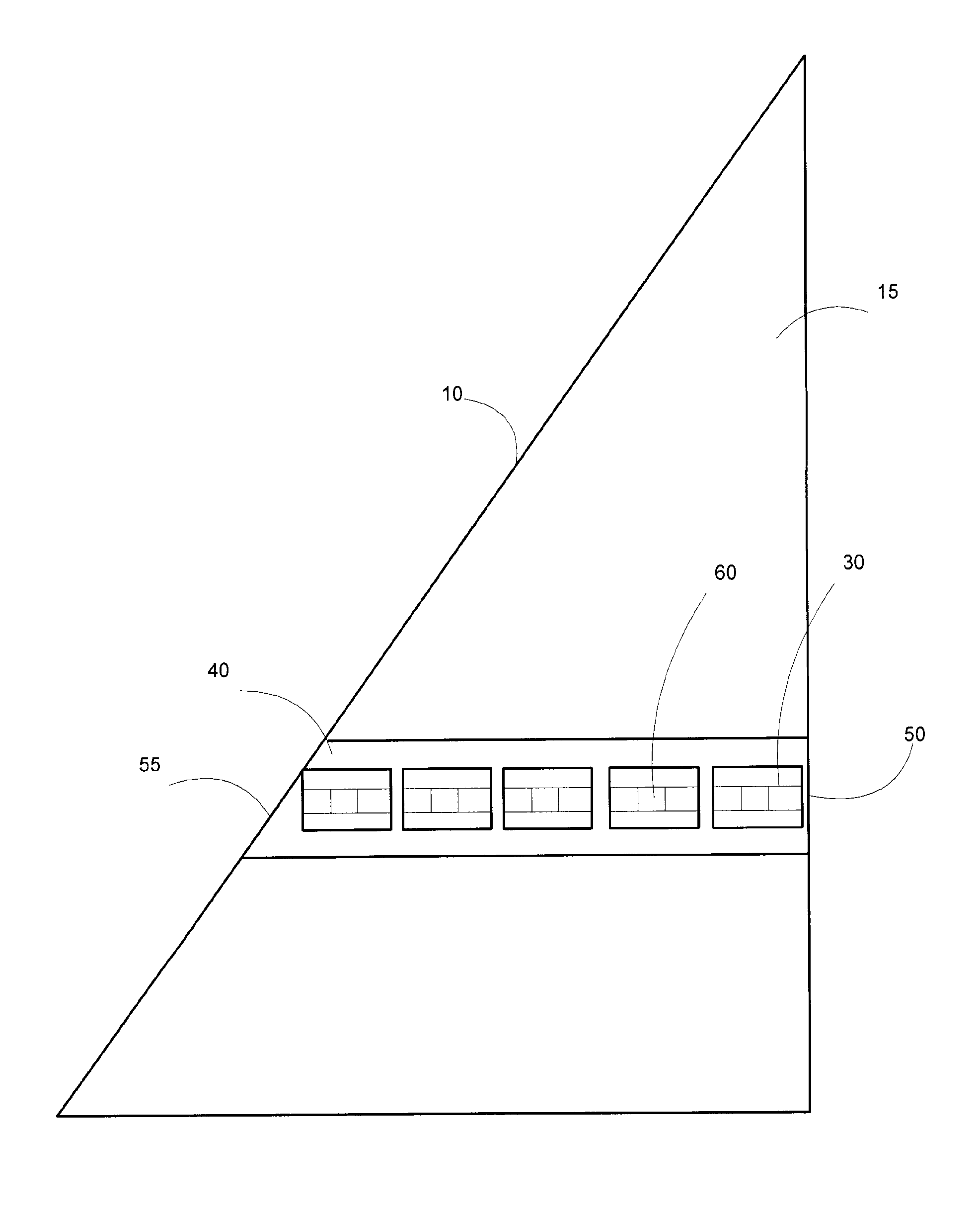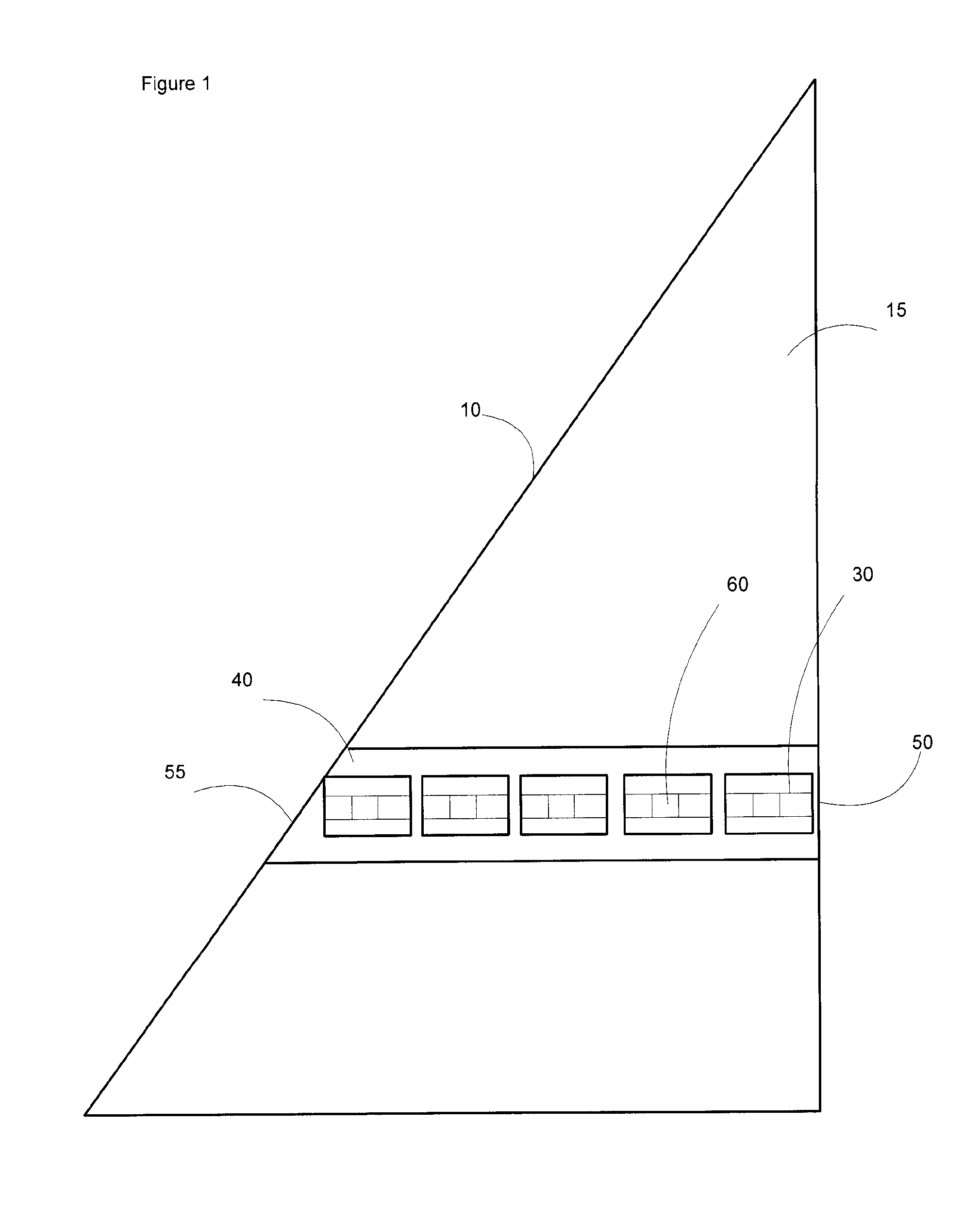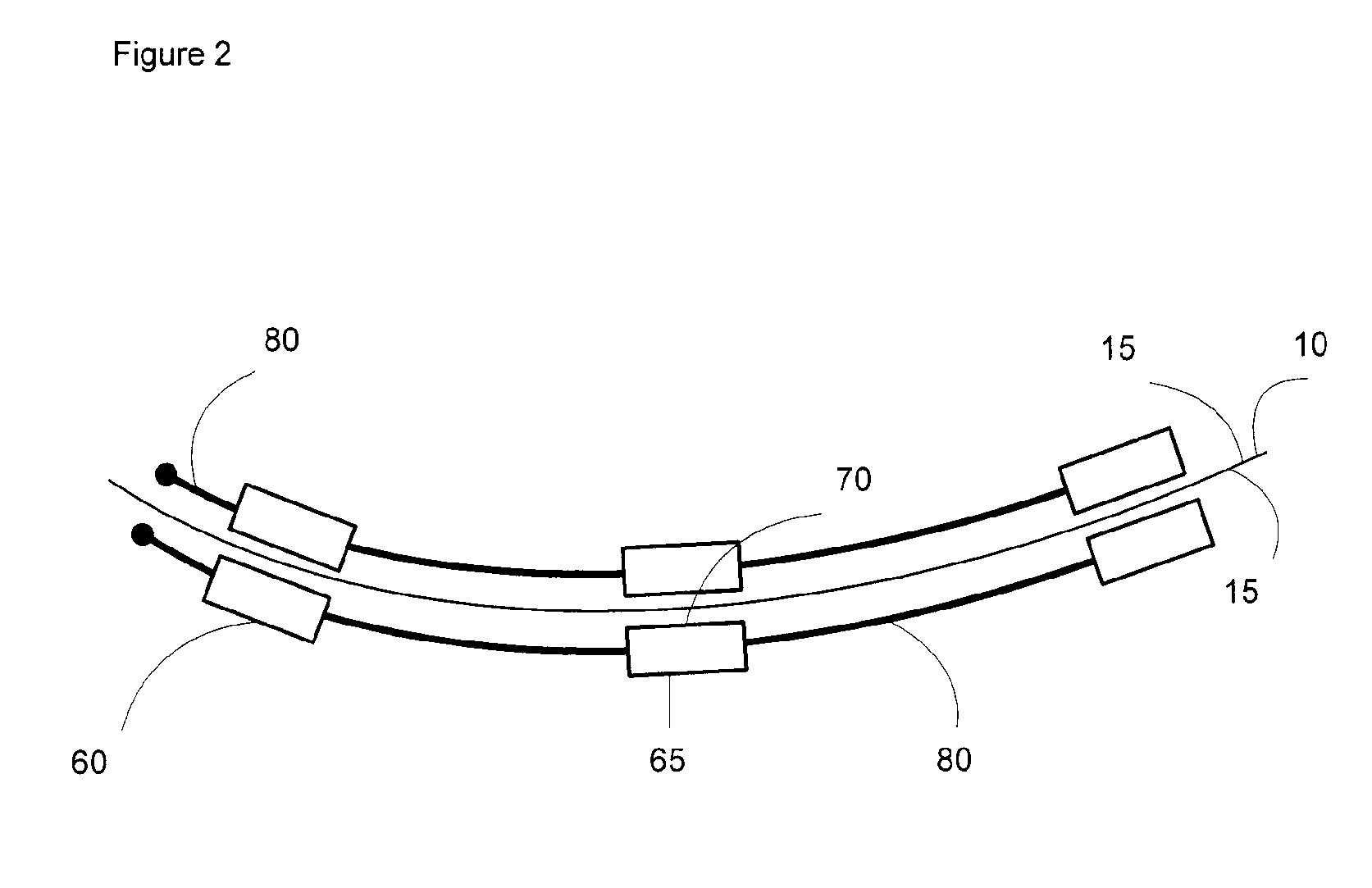Pressure sensing method and system for flexible aerodynamic surfaces
a technology of aerodynamic performance and pressure sensing, which is applied in the direction of liquid/fluent solid measurement, volume measurement, volume measurement, etc., can solve the problems of real-time aerodynamic performance, inability to quantitatively measure the full scale, and the inability to quickly remove the bundle of enable signal wires, so as to achieve easy addition or removal of the sail without damage to the sail
- Summary
- Abstract
- Description
- Claims
- Application Information
AI Technical Summary
Benefits of technology
Problems solved by technology
Method used
Image
Examples
Embodiment Construction
[0024]This system and method according to the invention enables full-scale real-time aerodynamic pressure to be measured on a flexible surface such as sail 10. The system comprises two main components: a plurality of sensors 20 with means to position the sensors, such as batten 30; and software related to managing, analyzing and displaying the measurements from sensors 20.
[0025]Batten 30 is a flexible tube like structure, which easily conforms to the shape of the surface 15 of sail 10, as seen in FIG. 1. Batten 30 may be made of plastics or composite materials. Batten can be attached to the surface 15 by means of a batten pocket 40, or tape or stitching in a similar manner as prior art battens. Batten pocket 40 may be a material sleeve sewn onto sail 10, which allows batten 30 to be easily slid into sail 10 and secured. Batten pocket 40 contains apertures for sensors 60 to be exposed to exterior pressure. Alternatively, the batten may be secured to the sail using tape or sewn direct...
PUM
 Login to View More
Login to View More Abstract
Description
Claims
Application Information
 Login to View More
Login to View More - R&D
- Intellectual Property
- Life Sciences
- Materials
- Tech Scout
- Unparalleled Data Quality
- Higher Quality Content
- 60% Fewer Hallucinations
Browse by: Latest US Patents, China's latest patents, Technical Efficacy Thesaurus, Application Domain, Technology Topic, Popular Technical Reports.
© 2025 PatSnap. All rights reserved.Legal|Privacy policy|Modern Slavery Act Transparency Statement|Sitemap|About US| Contact US: help@patsnap.com



